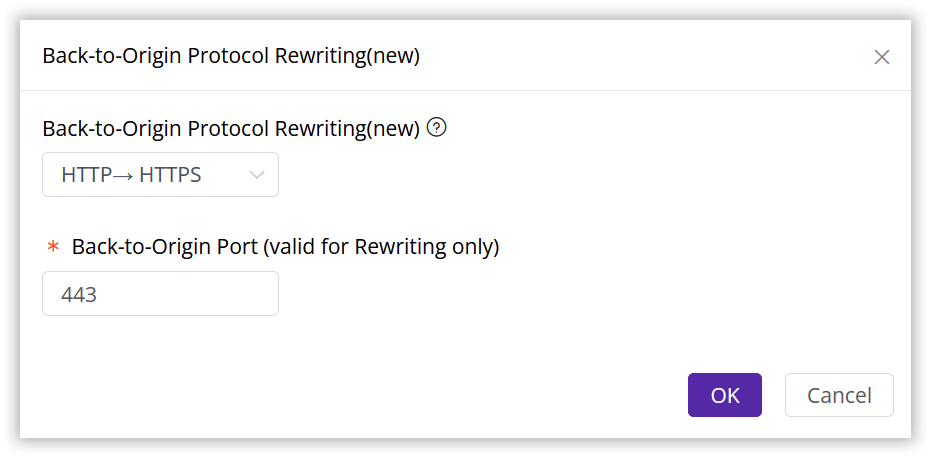HTTP/HTTPS Back to Origin
Last update:2025-04-24 17:28:42
The Back-Origin Protocol Rewriting feature gives you flexibility in how your origin communicate with our CDN edge servers origin servers. By default, the CDN will follow the protocol used in the original client request (HTTP or HTTPS). However, Back-Origin Protocol Rewriting allows you to override this default behavior for enhanced security and efficiency.
How to Configure Back-Origin Protocol Rewriting
- Log in to the CDNetworks Console and select the appropriate product.
- Navigate to the Configuration, locate the domain you wish to configure,and click on Edit Configuration on the top or the Edit button to the right of the domain
 .
. - On the Edit Configuration page, locate Back-to-Origin Settings - Back-to-Origin Protocol Rewriting(new), and then click the Modify button.
- Select your desired protocol rewriting option and customize the back-origin port as needed.

Parameter Description
| Parameter | Description | Details |
|---|---|---|
| Back-to-Origin Protocol Rewrite (New) | Options include Follow,HTTP->HTTPS and HTTPS->HTTP | - Follow: Adheres to the end-user’s original request protocol by default. If the end-user redirect protocol rewrite has been configured under Page Rewriting/Redirecting-URL Rewrite, the CDN back-to-origin traffic will comply with the client request protocol as specified by this configuration. - HTTP->HTTPS: Engages the HTTPS protocol for secure connections to the origin server. - HTTPS->HTTP: Utilizes the HTTP protocol for connections to the origin server. |
| Back-to-Origin Port | Designates the port number for CDN back-to-origin traffic | - Default ports are 80 (HTTP) and 443 (HTTPS). You can customize ports as needed. - The back-to-origin port setting is only applicable to requests matching the rewrite rule. Requests not meeting the rule will default to the port specified in Alternate Back-to-Origin> in settings. - For instance, configuring HTTP->HTTPS with a specified back-to-origin port of 443 means all HTTP requests will revert to the origin using port 443, while HTTPS requests will revert using the port set in Replace Back-to-Origin. |
Notes

-
When configuring the back-to-origin protocol rewrite and port, it’s strongly recommended to keep your Back-to-Origin Protocol Rewriting port settings consistent with your Alternate Back-to-Origin ports to avoid causing back-to-origin anomalies.
-
Should there be a need for different back-to-origin port configurations, it is crucial to reach out to our technical support for comprehensive testing and professional guidance prior to implementation. This approach ensures a stable and efficient CDN operation, aligning with industry best practices.